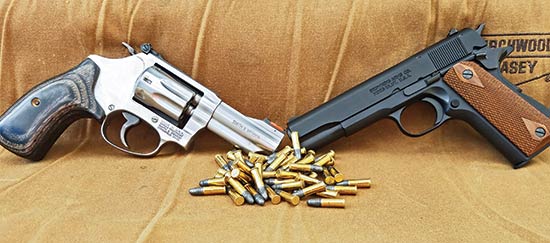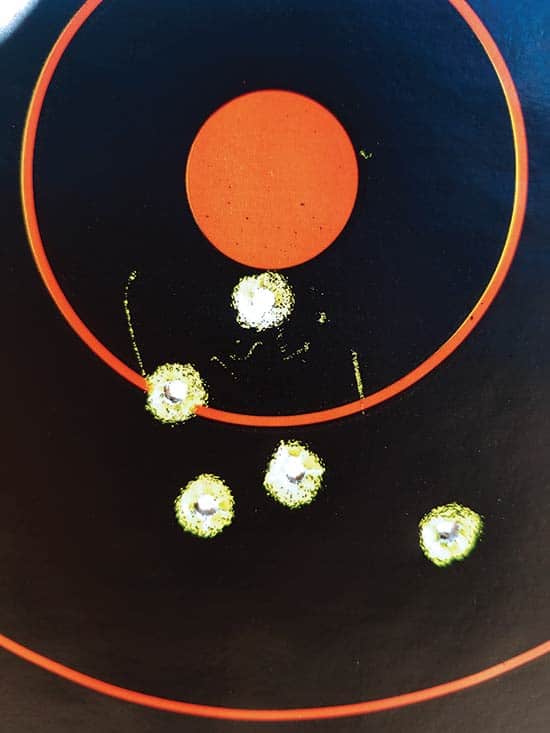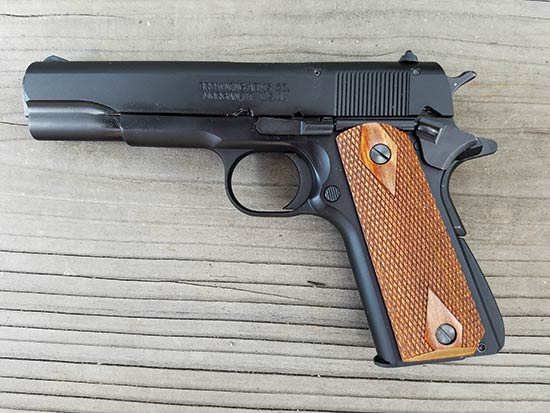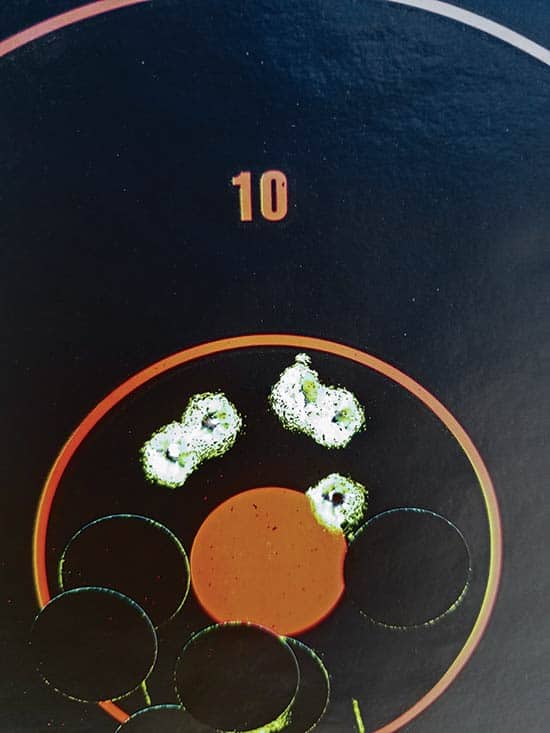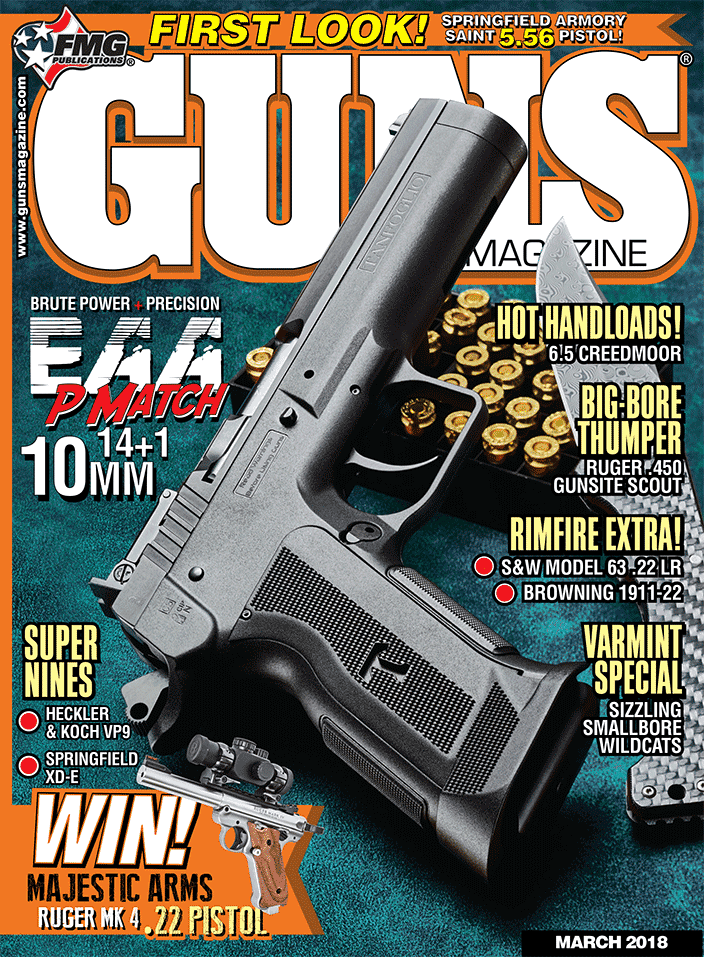A COOL TWENTY-TWOFER
RE-RASSLIN’ THE AUTO VS. REVOLVER ISSUE DOESN’T GET MUCH
EASIER WHEN CALIBER—AND GUN SIZE—ARE SCALED DOWN.
The revolver vs. auto argument is as old as dirt. Well, older maybe. No, older most definitely. So why revisit it you may ask? Well, OK. Here’s my excuse, but it’s a good one.
Even after decades of such luminaries as Keith, Askins, and Cooper weighing in on the subject, I have a hard time recalling when it ever reached down to the rimfire levels. And that’s where I’d like to bring it.
What brought this whole thing about sprung from a problem my buddy Thomas Mackie had. And it shouldn’t be all that shocking to any gun guy who has ever attempted to get his better half hooked up with a manageable piece of hand-held hardware.
Thomas’ wife, Yuen Lam, is the personification of “petite,” a bit light in the hand-strength department and not overly crazy about recoil. His previous attempts to get her comfortable with a variety of .380 pocket autos had been somewhat less than successful. Ditto a wadcutter-loaded .38 J-Frame Smith snubbie.
The problem was fairly simple from a physics standpoint. Small guns don’t usually do a very good job of lessening the felt recoil of cartridges normally considered to be on the light side. A .380 in a polymer, striker-fired micro is gonna try to climb out of your hand. Big hand, small hand, recoil is a factor.So a .22 seemed to be in order. We elected to try two—Browning’s scaled-down 1911-22A1 and S&W’s Model 63 3-inch barreled J-Frame.
Ergonomically, the Browning was pretty much perfect out of the box. Much has been written—justifiably—about the “fits anybody” virtues of the 1911 grip configuration. And when you scale the whole thing down as Browning did, it is ideal for small-handed shooters. The slide was easy to rack, the thumb safety easy to reach and the 15-ounce weight about ideal.
Within three magazines through the Browning, Thomas’ wife was staying in an 8-inch circle at 21 feet offhand. Which was very encouraging considering her previous efforts. What problems she had were primarily due to trigger control rather than sight picture.
The M63 Smith needed a little help in the shootability department. We added a lighter mainspring and trigger return spring from Wolff and Brownells respectively. This made the gun easier to cock in SA mode and easier to fire in DA mode. Then we added a set of Altamont’s Altai Silverblack laminate stocks. These helped out with the trigger reach and double-action control (plus they looked far sexier than the issue synthetic boot grip, a not-inconsiderable factor when tailoring a piece to anyone who can spend an hour or so judging the appeal of shoes).
Although a .22 handgun is not an optimum self-defense choice, it’s better than nothing (in fact, it’s probably better than a whole lot of other things such as kitchen utensils, pocketknives or loud whistles). And both the Smith and the Browning would be about equally well suited in an emergency role. It’s simply a question of an 8- vs. 10-round capacity. And if you want to throw in the reloading speed of the Browning auto, this would certainly factor in.
As far as sheer utility, the Smith should have the advantage of being able to digest a wider range of ammo, but truth be told, both guns were 100 percent on the reliability factor with the loads we used—which included hyper-velocity 31-grain Federal Spitfire, bulk pack high velocity Winchester “555” 36-grain hollowpoints, Federal Gold Medal Match 40-grain standard velocity and Aguila’s 60-grain Sniper Subsonic.
Accuracy? Well, without putting too fine a point on it, both guns preferred the Winchester “555” bulk-pack stuff, and the overweight 60-grain Aguila subsonic (God knows why we keep getting great results out of standard-twist .22’s with this load). Both the Federal Spitfire and Gold Medal Match were a bit disappointing in both guns. But all were in spec should you ever want to ventilate tin cans at 50 feet or so—and it’s worth noting the Federal Spitfire hyper-screamer was the only load to approach the supersonic levels with either gun (average: 1,070 fps from the Browning)—even though we’re talking a 1-1/4 inch difference in barrel length. In short, the Golden Rule of rimfires still applies. Find out what your piece likes and use it.
For me the Smith has undeniable advantages as an outdoorsman’s sidearm. Ammo versatility (you can shoot Shorts as well as LR’s) and adjustable sights are the main ones as far as I’m concerned. This really isn’t a huge deal, the fixed sights on the Browning were just as easy to acquire, the trigger pull was as good—if not better—than the SA pull on the Smith, and overall 5-shot groups were tighter at 50 feet, which could have been attributable to the fact the Smith has 8 separate charge holes.
As far as actual trigger pull weight, the SA pull on the Smith broke at a hair under 2 pounds. That of the Browning 1911-22, a nice 3-1/2. But there’s another revolver advantage beyond mere nuts and bolts, particularly in any situation where deliberate firing is out of the question. Once you’ve fired, you don’t have a live round in the chamber anymore—which simplifies reholstering in a small-game (or emergency) situation. To put it simply, once you light off a round in a revolver, the action stops. Once you do it in an auto, the action starts.
The revolver/auto argument does exist on a rimfire scale, I suppose. But probably not on the scale of the old .357 revolver/1911 squabble that enlivened the 1960s and ’70s. We’re talking rimfires here. And as long as self-defense is a secondary consideration, it’s pretty much a matter of personal preference. And if it’s someone else’s preference instead of your own, you need to butt out because this pretty much seals the deal (that’s what I learned).
Oh, my buddy Thomas’ wife, who kinda instigated the whole thing? She’s sold on the Browning 1911-22. Me, I like the Smith. Thomas? He suffers the curse of being both a J-Frame fanatic and a 1911 traditionalist. He’ll go either way.
Aguila Ammunition
(888) 452-4019
www.aguilaammo.com
Altamont Grips
901 Church St.
Thomasboro, IL 61878
(800) 626-5774
www.altamontco.com
Brownells
300 Brownells Pkwy.
Grinnel, IA, 50112
(800) 741-0015
www.brownells.com
Federal Premium Ammunition
900 Ehlen
Anoka, MN 55303
(800) 379-1732
www.federalpremium.com
Winchester Ammunition
600 Powder Mill Rd.
East Alton, IL 62024-1273
(800) 945-5237
www.winchester.com
W.C. Wolf Co.
P.O. Box 458
Newton Square, PA
(800) 545-0077
www.gunsprings.com
